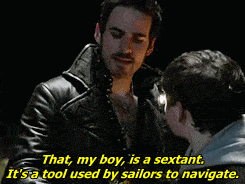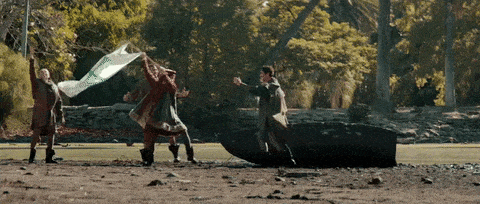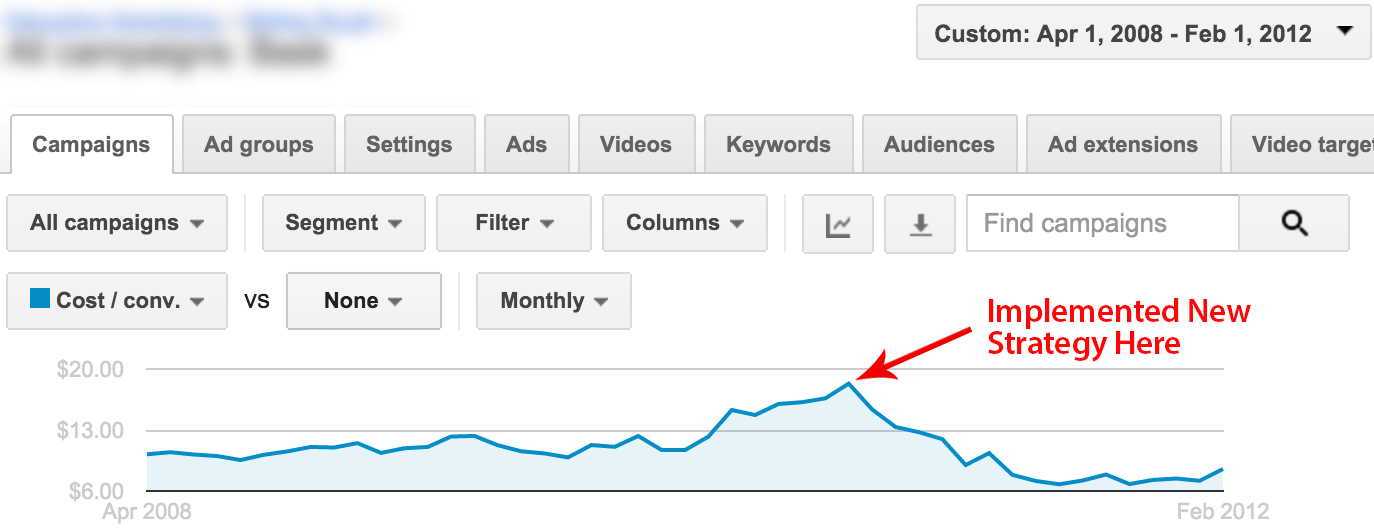The Biggest Marketing Mistake of 2020? Not Using End-to-End Tracking…
by Aden Andrus • January 13, 2020
By most measurements, Christopher Columbus’s first visit to the Americas was a huge waste of money. He didn’t find a route to the Orient, returned with next-to-no gold or spices and lost his largest ship—the Santa Maria—off the coast of Haiti.
However…he did come back with something important: a map.
You see, the first time Columbus set sail for India, he had no idea where he was going. He had no idea that there was an entire continent between him and his destination. As a result, his original voyage took over 5 weeks and produced little-to-no economic value…with one exception.
That map.
While his first journey produced a terrible return-on-investment, Christopher Columbus and his men did an excellent job of tracking their voyage across the seas. They knew they were sailing into the unknown, and the only chance they had of finding their way back was through careful, end-to-end tracking of their journey.

As marketers, we’re on a similar journey into the unknown. Every time you launch a new campaign, you’re taking a gamble. You don’t know if your efforts will pay off the way you hope, sail off the edge of the world…or result in a new, groundbreaking discovery.
The only way through unknown waters is to track everything, learn from your mistakes and chart a path to success. But, none of that is possible without dedicated, high-quality end-to-end tracking.
Why You Need End-to-End Tracking
To be honest, a lack of good end-to-end tracking is one of the biggest, most common online advertising mistakes we see here at Disruptive. It can be a pain to get end-to-end tracking set up, so many businesses never make the necessary investment.
And, as a result, their advertising campaigns are always a bit “lost at sea”.
Can you discover new things and make progress in your campaigns without end-to-end tracking? Sure, but there’s a reason why everyone’s heard of Christopher Columbus…and almost no one’s heard of Leif Erikson, the Viking explorer who visited the Americas hundreds of years before Columbus was even born.
It was that map.
Leif Erikson landed in North America purely by accident. He was blown off-course en route to Greenland. So, while he—like Columbus—saw the Americas as a place of opportunity, he never went back.
Columbus, on the other hand, knew exactly how to get back. And, when he set out on his second voyage, he set out with 17 ships, crossed the ocean in a blistering 21 days and established long-lasting European colonies on the new continent. The rest, as they say, was history.

Christopher Columbus’s end-to-end tracking changed the world. Setting up end-to-end tracking for your business might not have quite that big of an impact, but it will change your business for the better.
Where Things Go Wrong
Now, all of these stories about Leif Erikson and Christopher Columbus are a fine analogy, but how does end-to-end tracking actually affect businesses today? Is it really worth the effort? How important is that information you’re missing?
There are three main ways that a lack of end-to-end tracking can affect your marketing performance:
- Attribution problems
- Misdirected ad spend
- Missed growth opportunities
To show you just how valuable end-to-end tracking can be, let’s take a look at a quick case study in each of these areas.
Attribution Problems
A while back, we started working with a client that had been spending about $7,000 a month on Google Ads. On the surface, it looked like everything was in pretty good shape, but they wanted to take their online marketing to the next level, so they hired us and an SEO agency to help.
Unfortunately, while it looked like they were tracking conversions in Google Analytics, they hadn’t done a very good job at setting up end-to-end tracking. Technically speaking, their conversions were being tracked, but they were being attributed to the wrong marketing channels! To make things even worse, they weren’t even tracking one of their most important sources of conversions: phone calls.
In essence, it was like trying to chart a course with a drunk navigator.
Not surprisingly, it was a real challenge to make any forward progress with their campaigns. We’d make clever moves in their Google Ads account…only to watch their SEO leads increase.
As you can probably imagine, this made for an incredibly frustrating situation. We knew something was wrong, we just didn’t know what.
Then, we convinced the client to let us take a look at their tracking setup and discovered what our guts had already told us. We were trying to chart a course with bad data. Was it any wonder we were struggling?
Once we realized what the problem was, we helped the client set up true end-to-end tracking—including tracking phone calls. It took a lot of work, but without good data, we knew we were never going to get the results the client needed.
And then, things got really interesting.
Before we implemented end-to-end tracking, the client’s Google Ads campaigns were producing 28 leads a month at a cost-per-lead of $286.
After we fixed things, however, the exact same campaigns “miraculously” began driving 129 leads a month at a cost per lead of $73.
![]()
In other words, without end-to-end tracking, the client was missing data on almost 80% of their conversions. Only one in every five conversions was actually providing meaningful data we could use to optimize their account.
Just imagine if you were trying to drive somewhere and your GPS only gave you 20% of the directions you needed. Is it any wonder that the client’s campaigns weren’t going anywhere?
Once we had good data, however, we were finally able to start making real progress. We could see which keywords, ads and campaigns were driving conversions and use that data to make meaningful optimizations to their account. As a result, we cut their cost per conversion by about 20% and more than doubled conversion volume.
But none of that would have been possible without effective end-to-end tracking. If we hadn’t taken the time to set their tracking up correctly, the client would have kept investing in the wrong things and ended up losing more and more money. It was only with the right tracking setup that they were able to get their campaigns (and company) back on course.
Misdirected Ad Spend
True end-to-end tracking doesn’t stop with conversions, though. If you aren’t tracking everything from click-to-close, you can still end up making decisions based on bad data.
For example, one client came to us because they just couldn’t seem to make their campaigns profitable. They were tracking conversions effectively, but no matter what they tried, they just couldn’t get the results they needed. They’d even increased their budget by 30%, only to discover that if you don’t make money on a sale, it doesn’t matter whether you have 100 sales or 130 sales—you still won’t make money!
On paper, their situation didn’t make much sense. In the past 90 days, they had gotten almost 100,000 clicks and their conversion rate was 17.44%. I don’t know about you, but most of the clients we work with would be thrilled at those results.
But, it isn’t end-to-end tracking until you account for sales. It was only when we took an in-depth look at their campaign from click-to-close that we discovered the real problem: they were only closing 1% of their customers.
Why? They were paying for the wrong traffic.
Sure, they had a great clickthrough and conversion rate, but the people who were clicking and converting really weren’t all that interested in buying. In fact, the majority of their ad spend was driving clicks and conversions that never turned into sales. Was it any wonder that their campaigns weren’t profitable?
Simply by adjusting their targeting, we had the opportunity to cut cost-per-sale by over 40% and increase sales by more than 24%. All we had to do was look at the big picture and use end-to-end tracking to identify misdirected ad spend.
Missed Growth Opportunities
Even if you feel like your online advertising campaigns are going reasonably well, end-to-end tracking is still important. For example, Disruptive got its start because of end-to-end tracking.
Years ago, our CEO, Jake Baadsgaard, was working with one of our first clients. They were in an incredibly competitive industry where the cost-per-click, cost-per-conversion and cost-per-sale had doubled over the past year.
At first, it seemed like there was no way to improve things, but Jake’s original background was in web analytics, so he helped them set up end-to-end tracking in the hopes of finding new opportunities in their data.
And what an opportunity he found!
Like Christopher Columbus, it took some time, effort and more than a few course corrections, but because they were tracking everything, Jake eventually discovered something unexpected. A huge number of the client’s clicks and conversions were coming from search terms that had little to do with their core offering, but that presented a whole new world of opportunity for the client.
And, like the Americas, it was a new world that no one else had really explored yet.
Together, Jake and the client tested out this new opportunity and found that they could get conversions and sales from these search terms for a fraction of what they were currently paying. They built out a new product offering and campaigns around these terms and their cost-per-conversion plummeted.
Almost overnight, the question stopped being, “How do we reduce our cost-per-lead?” and became “How do we hire enough salespeople to field all these leads?”
For this client, going through their analytics data uncovered a growth opportunity that took their company from 25 employees to over 250 employees. They made millions in profit and received multiple rounds of VC funding. And all because of end-to-end tracking.
Conclusion
So, what’s the biggest online marketing mistake you can make in 2020? Is it failing to jump on the TikTok bandwagon? Is it not taking advantage of the latest features Google Ads released last year? Is it ignoring our advice on how to get better results from your website?
No, it’s failing to implement (and use) end-to-end tracking.
In the end, if you aren’t using end-to-end tracking, you don’t know what works and what doesn’t for your business. Maybe TikTok really is the secret to your business’s success this year, but if you aren’t tracking your results effectively, how will you know? More importantly, without end-to-end tracking, how will you know what marketing efforts deliver profitable results and which ones are a waste of money?
Here at Disruptive, countless companies come to us for help, but less than 30% of them have effective tracking in place. So, if you’re going to focus on anything this year, start by taking the time to set up end-to-end tracking. Without it, you’ll never be able to navigate your way to digital marketing success.
Oh, and by the way, if you’d like some help setting up and taking advantage of end-to-end tracking, let us know here or in the comments. We’d love to help you get your campaigns on course!
What do you think of end-to-end tracking? Do you use it in your campaigns? What discoveries have you uncovered in your analytics data? Leave your thoughts in the comments below.






